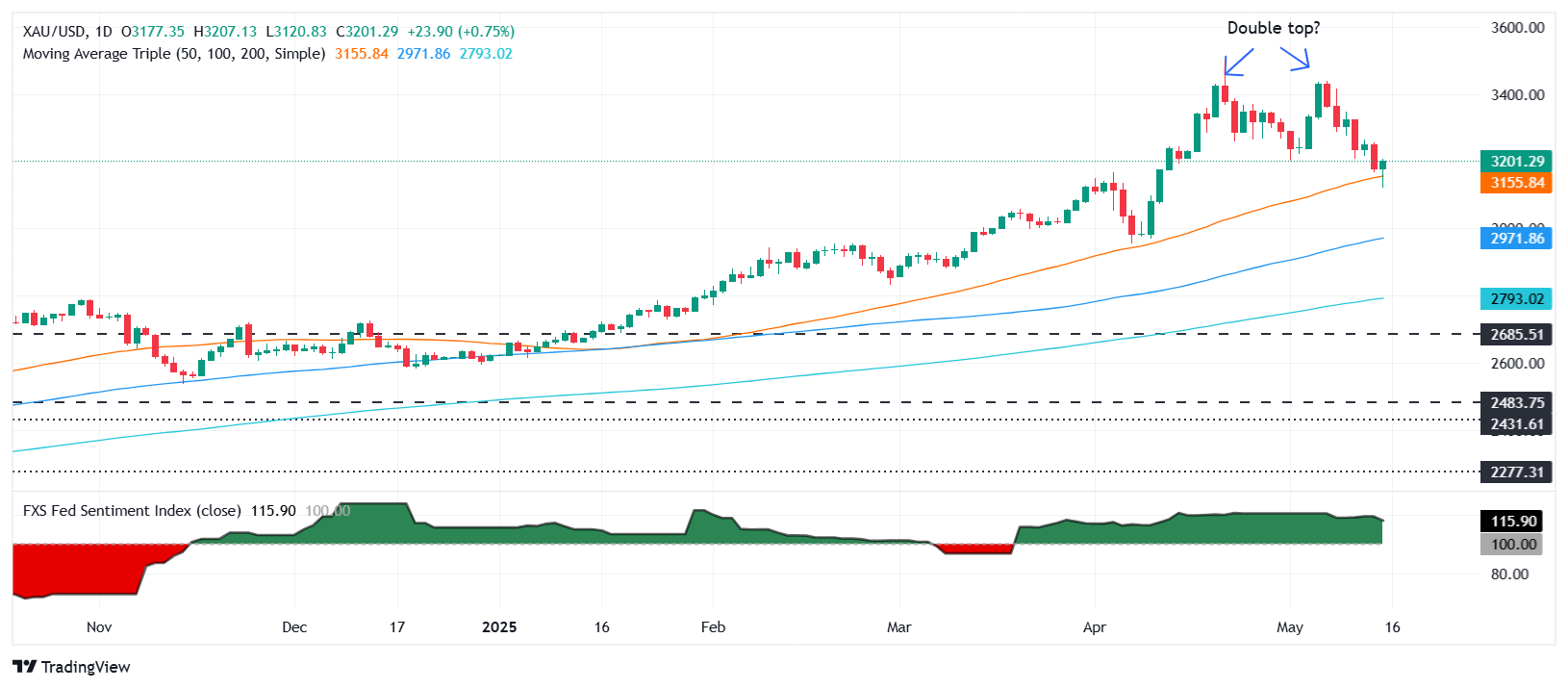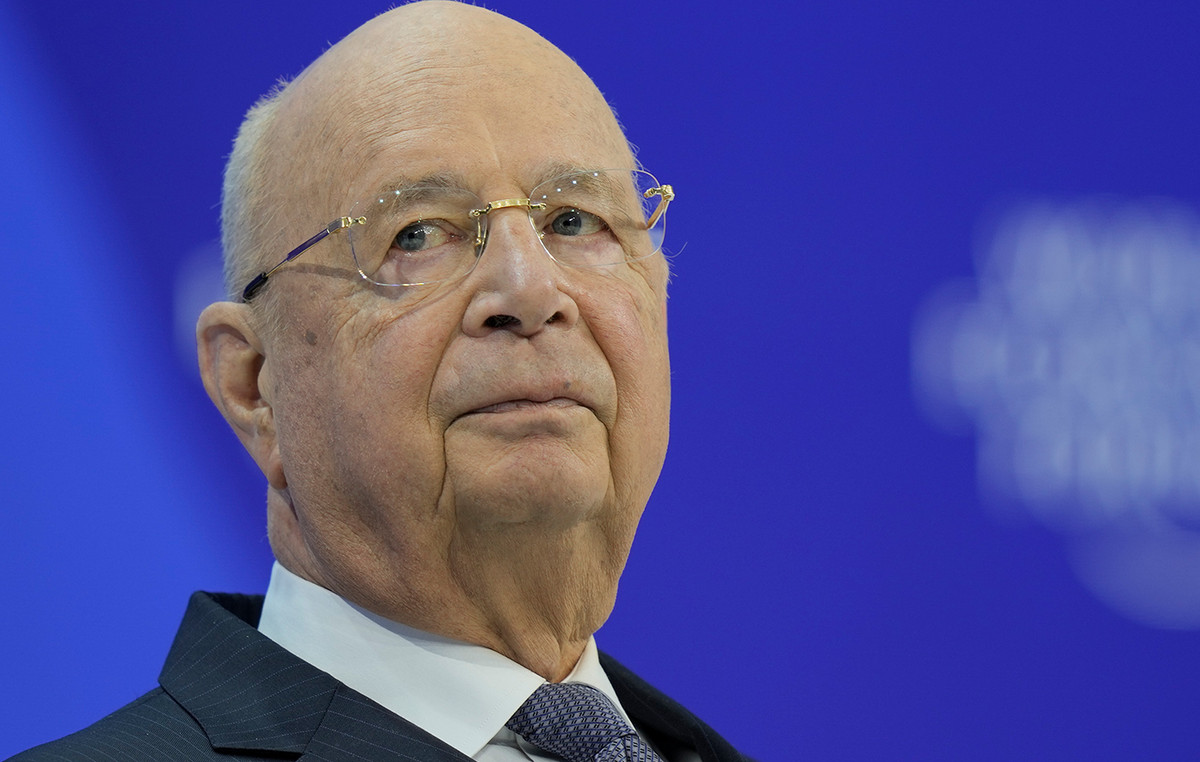- The gold driven by the unexpected fall of the April IPP feeds the speculation about fed fees cuts.
- Retail sales decelerate 0.1% dramatically while tariffs weigh on consumer spending, hinting at a broader economic weakness.
- The expectations of fees of fees of the Fed increase to 53 bp by 2025; DXY falls 0.15% to 100.88, supporting the recovery of gold.
Gold prices recovered some earlier terrain during the North American session after US economic data suggested that inflation at the factories continues to slowly slow down while consumer spending weakened due to US tariffs. At the time of writing, the XAU/USD quotes at $ 3.202, with an increase of 0.82%.
The XAU/USD wins 0.82% after the weakest inflation and expense data revive the hopes of relief, raising the ingot since a minimum of five weeks
After falling to a minimum of five weeks of $ 3,120, the metal without yield found offers that pushed the ingot above $ 3,200. The United States data showed that the Production Price Index (IPP) in April unexpectedly fell an intermencing, failing in an estimate of an increase of 0.2%. The underlying IPP fell by -0.4%, below the forecasts of an expansion of 0.3%.
At the same time, retail sales for the same period slowed down, increasing an intermencing 0.1%, after the March figures were checked to 1.7%. Economists expected the numbers to remain unchanged compared to the previous month.
Initial unemployment subsidy applications for the week that ended on May 10 increased by 229,000, as expected, without changes compared to the previous week.
The Xau/USD rose after the data, and so far, the bullies have recovered the figure of $ 3,200, since the US dollar, measured by the US dollar index (DXY), fell 0.15% to 100.88.
Market participants increased their bets that the Federal Reserve would relieve policy at 53 basic points (PB) in 2025, compared to 48.5 expected on Wednesday.
The de -escalation of the commercial war between the US and China impacted the price of the ingot in the midst of an improvement in the appetite for the risk. The gold fell from around $ 3,326 to $ 3.207, resulting in a loss of more than $ 120. However, since then it has been recovered, since US data reflects a slow economy.
In next week, the US economic agenda will have more Fed statements and the consumer’s feeling index of the University of Michigan (UOM).
XAU/USD price forecast: technical perspective
From a technical point of view, the gold rebound could be ephemeral if buyers fail to close above $ 3,200 in the newspaper. In that case, they need to exceed the peak of May 14, $ 3,257 to maintain the hope of testing $ 3,300 and cutting the weekly losses. However, the impulse favors a greater fall, as indicated by the relative force index (RSI). With this in mind, operators must be warned that the current climb could be a correction of an ongoing bearish trend.
On the other hand, if the Xau/USD closes on a daily base below $ 3,200, a greater fall is expected, with the simple mobile average (SMA) of 50 days at $ 3,155 as the next level of support, ahead of $ 3,100.

FAQS GOLD
Gold has played a fundamental role in the history of mankind, since it has been widely used as a deposit of value and a half of exchange. At present, apart from its brightness and use for jewelry, precious metal is considered an active refuge, which means that it is considered a good investment in turbulent times. Gold is also considered a coverage against inflation and depreciation of currencies, since it does not depend on any specific issuer or government.
Central banks are the greatest gold holders. In their objective of supporting their currencies in turbulent times, central banks tend to diversify their reserves and buy gold to improve the perception of strength of the economy and currency. High gold reserves can be a source of trust for the solvency of a country. Central banks added 1,136 tons of gold worth 70,000 million to their reservations in 2022, according to data from the World Gold Council. It is the largest annual purchase since there are records. The central banks of emerging economies such as China, India and Türkiye are rapidly increasing their gold reserves.
Gold has a reverse correlation with the US dollar and US Treasury bonds, which are the main reserve and shelter assets. When the dollar depreciates, the price of gold tends to rise, which allows investors and central banks to diversify their assets in turbulent times. Gold is also inversely correlated with risk assets. A rebound in the stock market tends to weaken the price of gold, while mass sales in higher risk markets tend to favor precious metal.
The price of gold can move due to a wide range of factors. Geopolitical instability or fear of a deep recession can cause the price of gold to rise rapidly due to its condition of active refuge. As an asset without yield, the price of gold tends to rise when interest rates lower, while the money increases to the yellow metal. Even so, most movements depend on how the US dollar (USD) behaves, since the asset is quoted in dollars (Xau/USD). A strong dollar tends to keep the price of gold controlled, while a weakest dollar probably thrusts gold prices.
Source: Fx Street
I am Joshua Winder, a senior-level journalist and editor at World Stock Market. I specialize in covering news related to the stock market and economic trends. With more than 8 years of experience in this field, I have become an expert in financial reporting.







